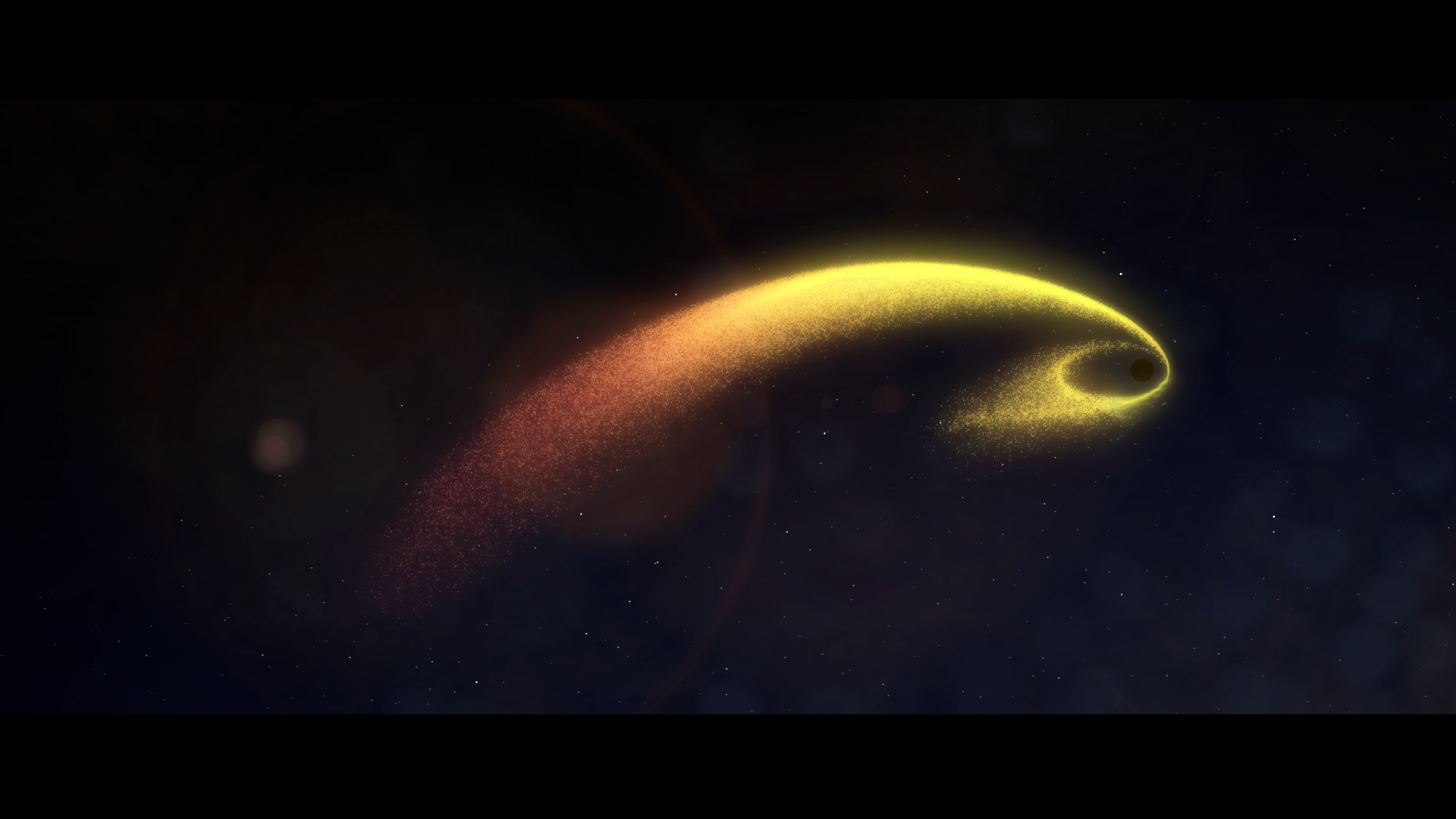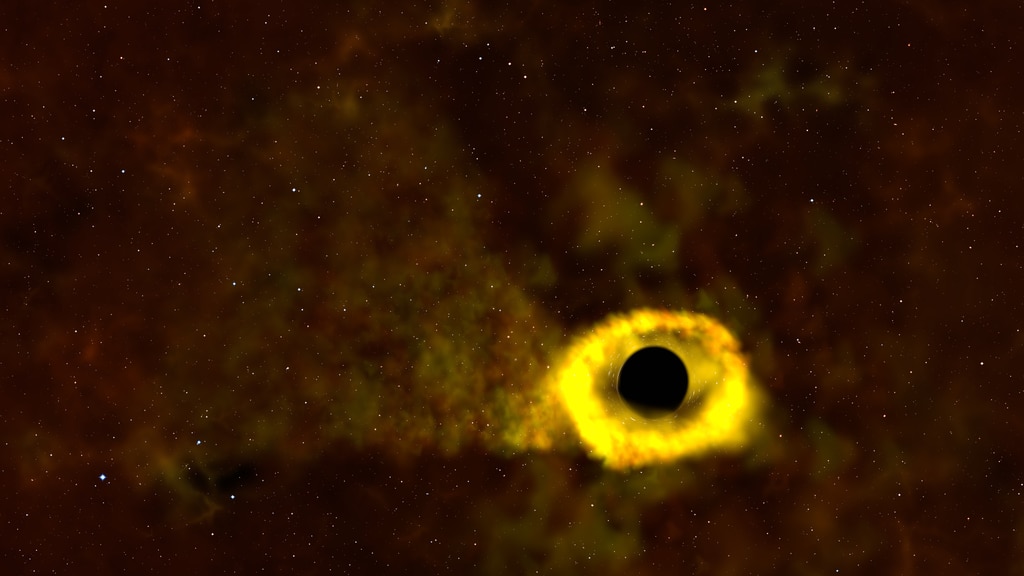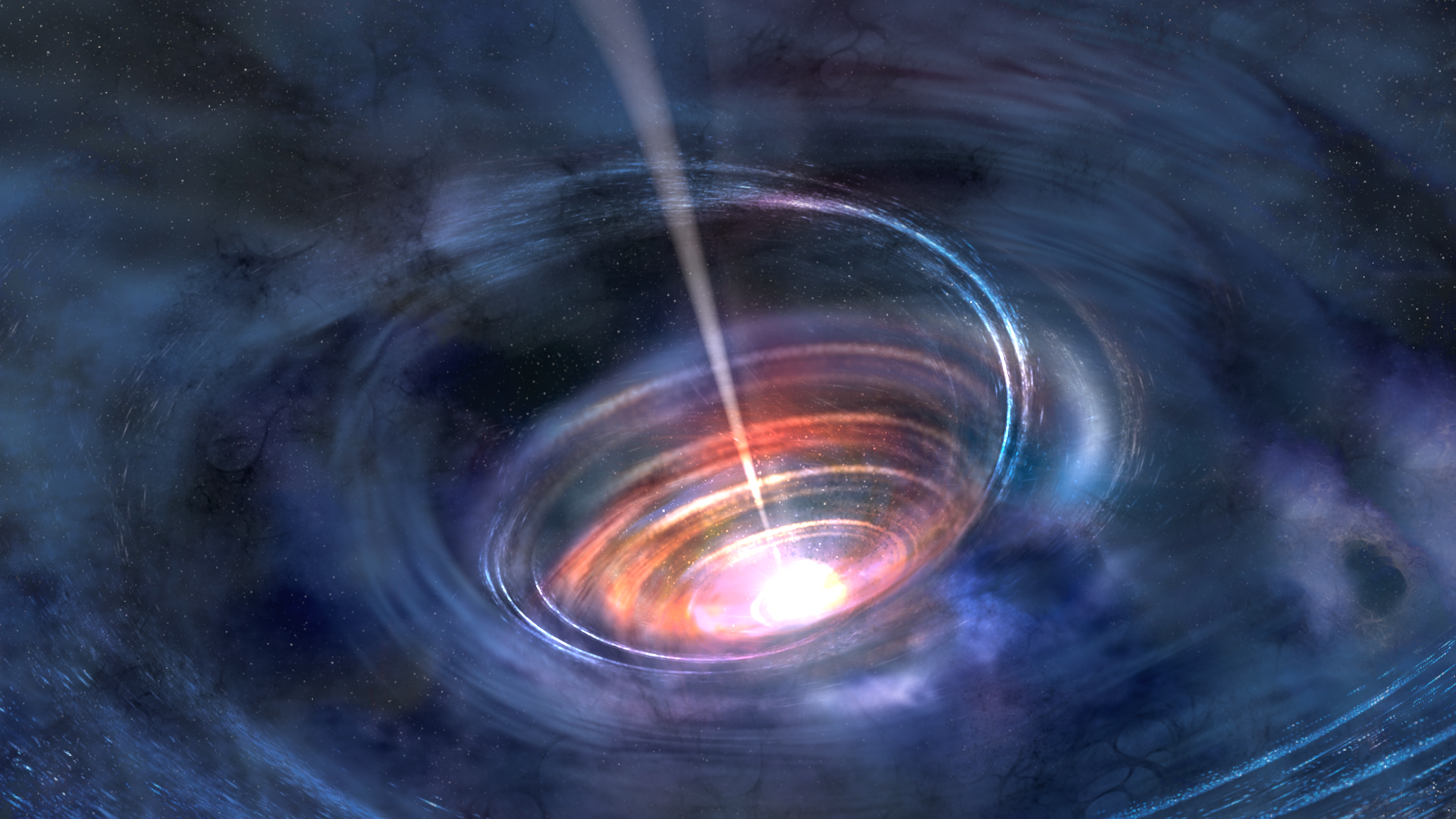Swift Spots a Snacking Black Hole Using a New Trick
Watch to learn how an update to NASA’s Neil Gehrels Swift Observatory allowed it to catch a supersized black hole in a distant galaxy munching repeatedly on a circling star.
Credit: NASA’s Goddard Space Flight Center
Music: "Teapot Waltz" by Benjamin Parsons from Universal Production Music
Watch this video on the NASA Goddard YouTube channel.
Complete transcript available.
Using NASA’s Neil Gehrels Swift Observatory, which launched in 2004, scientists have discovered a black hole in a distant galaxy repeatedly nibbling on a Sun-like star. The object heralds a new era of Swift science made possible by a novel method for analyzing data from the satellite’s X-ray Telescope (XRT).
When a star strays too close to a monster black hole, gravitational forces create intense tides that break the star apart into a stream of gas. The leading edge swings around the black hole, and the trailing edge escapes the system. These destructive episodes are called tidal disruption events. Astronomers see them as flares of multiwavelength light created when the debris collides with a disk of material already orbiting the black hole.
Recently, astronomers have been investigating variations on this phenomena, which they call partial or repeating tidal disruptions.
During these events, every time an orbiting star passes close to a black hole, the star bulges outward and sheds material, but survives. The process repeats until the star loses too much gas and finally breaks apart. The characteristics of the individual star and black hole system determine what kind of emission scientists observe, creating a wide array of behaviors to categorize.
On June 22, 2022, the XRT captured Swift J0230 for the first time. It lit up in a galaxy around 500 million light-years away in the northern constellation Triangulum. Swift’s XRT has observed nine additional outbursts from the same location roughly every few weeks.
Scientists propose that Swift J0230 is a repeating tidal disruption of a Sun-like star orbiting a black hole with over 200,000 times the Sun’s mass. They estimate the star loses around three Earth masses of material on each pass. This system provides a bridge between other types of suspected repeating disruptions and allowed scientists to model how interactions between different star types and black hole sizes affect what we observe.
Swift J0230’s discovery was possible thanks to a new, automated search of XRT observations called the Swift X-ray Transient Detector.
After the instrument observes a portion of the sky, the data is transmitted to the ground, and the program compares it to previous XRT snapshots of the same spot. If that portion of the X-ray sky has changed, scientists get an alert. In the case of Swift J0230, astronomers were able to rapidly coordinate additional observations of the region.

Swift J0230 occurred over 500 million light-years away in a galaxy named 2MASX J02301709+2836050, captured here by the Pan-STARRS telescope in Hawaii.
Credit: Niels Bohr Institute/Daniele Malesani
For More Information
Credits
Please give credit for this item to:
NASA's Goddard Space Flight Center. However, individual items should be credited as indicated above.
-
Producer
- Sophia Roberts (Advocates in Manpower Management, Inc.)
-
Narrator
- Sophia Roberts (Advocates in Manpower Management, Inc.)
-
Editor
- Sophia Roberts (Advocates in Manpower Management, Inc.)
-
Science writer
- Jeanette Kazmierczak (University of Maryland College Park)
-
Project support
- Scott Wiessinger (KBR Wyle Services, LLC)
-
Animator
- Chris Smith (KBR Wyle Services, LLC)
Missions
This page is related to the following missions:Series
This page can be found in the following series:Related papers
Release date
This page was originally published on Thursday, September 7, 2023.
This page was last updated on Tuesday, September 5, 2023 at 1:17 PM EDT.



